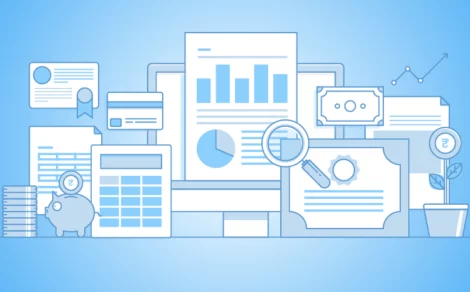The cash ratio is calculated using this formula:
**(Cash + Cash Equivalents) / Current Liabilities**
Just plug in your numbers, and you’re good to go.
Toruscope » Investment Guide » What Is Cash Ratio? Meaning, Formula & Importance Explained
Let’s be honest, financial ratios don’t exactly scream excitement. But when it comes to managing your business or analysing a company’s financial health, they matter. And one of the more underrated but powerful ratios is the cash ratio.
In this blog, we’ll break down the definition of cash ratio in the simplest way possible. So, if you’re tired of Google-searching definitions and ending up more confused than when you started, this one’s for you.
Explaining Cash Ratio
The cash ratio is a measure of a company’s immediate ability to pay off its short-term liabilities using only its most liquid assets: cash and cash equivalents.
So, if your business was a person, the cash ratio would answer this question: “If all your bills were due right now, could you cover them just using the money in your wallet and checking account?”
Here’s the official cash ratio definition: A liquidity ratio that compares a company’s total cash and cash equivalents to its current liabilities.
The goal? To see how well-prepared a company is for unexpected expenses or a sudden dip in income. Think of it like a financial stress test.
What is the Formula for the Cash Ratio?
The cash ratio is calculated using below mentioned formula:
Cash Ratio = (Cash + Cash Equivalents) / Current Liabilities
Let’s break that down:
- Cash: Money sitting in the bank or cash on hand.
- Cash Equivalents: Near-cash assets like treasury bills or short-term government securities that can be turned into cash quickly.
- Current Liabilities: Bills and obligations due within a year – think accounts payable, wages, short-term loans, taxes.
It’s the most conservative of all the liquidity ratios because it doesn’t include inventory or receivables but it’s just cash, and things almost as good as cash.
Let’s understand with an example: Say your company has ₹1,00,000 in cash and cash equivalents. You also owe ₹50,000 in short-term liabilities like bills, wages, or supplier payments.
Your cash ratio = 1,00,000 / 50,000 = 2.0
This means for every ₹1 you owe, you have ₹2 available in cold, hard cash. That’s a pretty safe place to be. It gives confidence to your suppliers, investors, and even you, the owner.
On the flip side, a low cash ratio might signal potential trouble. If a company can’t meet its obligations without selling assets or taking loans, that’s a red flag.
Importance of the Cash Ratio
So, why should you care? Especially when there are other ratios like the current ratio and quick ratio?
Because the cash ratio cuts the fluff.
- No assumptions about customers paying on time (like with receivables).
- No false sense of security from unsold inventory.
- Just pure cash strength.
This makes it especially important in:
- Tight credit markets, when loans are hard to come by.
- Uncertain times, like recessions or pandemics.
- Risk assessments, where investors or lenders want to see how much breathing room a company has.
Also, companies in sectors with unpredictable income like seasonal businesses, often monitor the cash ratio closely.
Drawbacks of the Cash Ratio
As useful as it is, the cash ratio isn’t perfect. Like any metric, it has its downsides.
- Too Conservative: Some companies operate just fine with a low cash ratio. They might invest heavily in receivables or inventory because they trust their cash flow.
- Misleading for Certain Industries: Retailers or manufacturers might have tons of assets tied up in stock and not cash. That doesn’t mean they’re struggling.
- Not Always Practical: Holding too much cash can actually raise questions: Why isn’t that money being invested or used for growth?
So, while a high cash ratio shows safety, it doesn’t always scream “smart management.” Balance is key.
Final Thoughts
So, there you have it—cash ratio meaning, explained in plain language. It’s not just another number on a balance sheet. It’s a snapshot of how prepared a company is to deal with the unexpected.
Whether you’re running a business, investing in stocks, or just trying to understand financial reports, understanding the cash ratio is a must. It doesn’t tell the whole story, but it tells a very honest part of it.
Frequently Asked Questions
Depends on the industry. In general, 0.2 is quite low. It means the company has only 20% of the cash it needs to cover short-term debts. For some businesses, it’s manageable but not ideal.
The quick ratio includes receivables and sometimes short-term investments. The cash ratio strips everything down to just cash and equivalents. It’s stricter and more cautious.
The different types of liquidity ratios include:
– Current Ratio
– Quick Ratio
– Cash Ratio
– Operating Cash Flow Ratio
– Working Capital Ratio
Each offers a different view of how easily a company can cover short-term obligations.
A lower ratio is generally better. It means the company isn’t overly relying on debt. Anything below 1 is usually considered healthy, though it varies by industry and company strategy.
Related Reads
Free Cash Flow (FCF) Explained
When evaluating any business, one practical question stands out: how much cash does the...
By: torus
- 5 mins
- 04.Aug.2025
- 0(0)
- 47
Fair Value Gap (FVG): A Trader’s Guide to Market Inefficiencies
In the world of technical analysis, chart patterns, and price action strategies, traders often...
By: torus
- 8 mins
- 30.May.2025
- 0(0)
- 305
What is Dissaving? | Definition, Causes & Examples
Financial planning isn’t just about saving, but it’s also about managing how and when...
By: torus
- 7 mins
- 30.May.2025
- 0(0)
- 122
Your Step-by-Step Guide to Becoming Debt-Free
Debt can be overwhelming, especially when it starts to feel like you’re just working...
By: torus
- 5 mins
- 30.May.2025
- 0(0)
- 98
What Are G-Secs? A Beginner’s Guide to Understanding How Its Working
Ever wondered what “G-Secs” are that your financial advisor keeps mentioning? Short for Government...
By: torus
- 7 mins
- 30.May.2025
- 0(0)
- 119
Understanding Quantitative Easing and Its Impact
When economic growth begins to stall, central banks play an essential role in steering...
By: torus
- 7 mins
- 30.May.2025
- 0(0)
- 105
Disclaimer: The content provided in this blog is for informational purposes only and does not constitute financial advice or recommendations. The content may be subject to change and revision. Readers are encouraged to conduct their own research and consult with a qualified financial advisor before making any investment decisions. Torus Digital and its affiliates takes no guarantees whatsoever as to its completeness, correctness or accuracy since these details may be acquired from third party and we will not be responsible for any direct or indirect losses or liabilities incurred from actions taken based on the information provided herein. For more details, please visit www.torusdigital.com.
Tenneco Clean Air IPO Listing: Strong Market Debut with 27% Premium
Tenneco Clean Air India Ltd made a confident entrance into the public markets on...
By: torus
- 5 mins
- 19.Nov.2025
-
3.7(6)
-
329
Stock to Buy Today: November 19, 2025
The Indian stock market witnessed a mild decline on November 18, 2025, ending a...
By: torus
- 4 mins
- 19.Nov.2025
-
4.3(3)
-
329
Mirae Asset Infrastructure Fund NFO: A Sector-Focused Bet on India’s Growth
Mirae Asset Mutual Fund has launched a new equity scheme — Mirae Asset Infrastructure...
By: torus
- 4 mins
- 18.Nov.2025
-
4.3(6)
-
329
Emmvee Photovoltaic IPO: Shares Make Muted Market Debut, List Flat At ₹217
Emmvee Photovoltaic Power made a muted debut on 18 November 2025, listing flat at...
By: torus
- 3 mins
- 18.Nov.2025
-
3.7(6)
-
329







